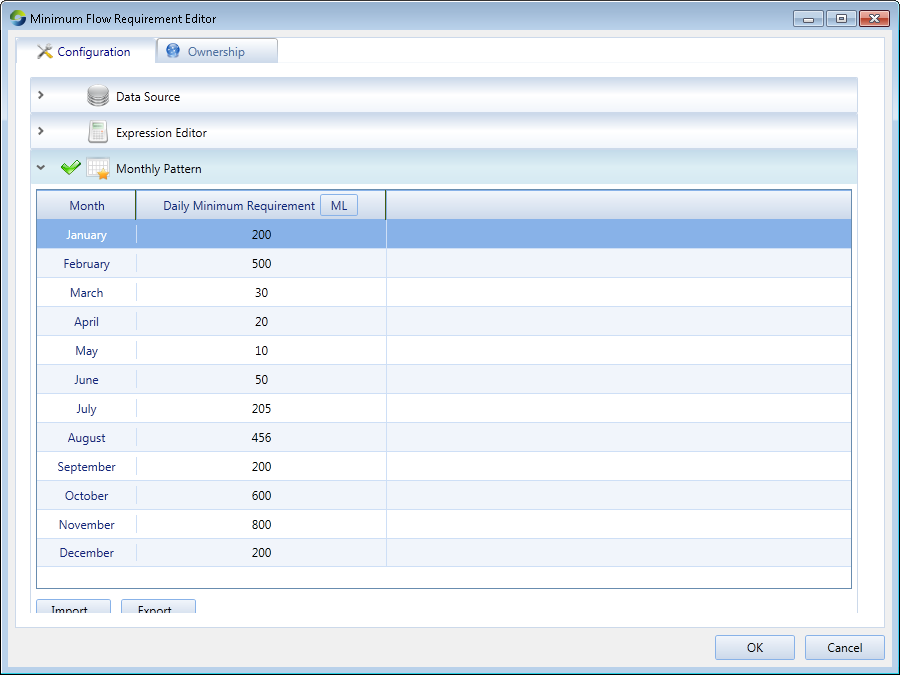The Minimum Flow Requirement node is used to ensure that there is a minimum flow rate at a point in a river system to meet various demands (stock, domestic or environmental needs). It is also used to generate transfers between an upstream and downstream storage. This node imposes a constraint which must be met at that point in the river model, even if additional water must be released from a storage. The requirement can be specified using a time series, via an expression or as daily values in megalitres.

You can also enter minimum daily flow requirements manually or load the data from a file. Table 1 shows the format of a comma-separated (.CSV) file for importing minimum flow requirement data.
Row | Column (comma-separated) |
|---|
1 | 2 |
1 | Month | Daily Minimum Requirement (ML) |
|
In the ordering phase, when the amount of ordered water expected (ie. forecast) to flow down the river past a minimum flow requirement is less than the requirement, then an order is placed such that the forecasted flow meets the requirement. If orders are more than the value specified by the requirement, no adjustment is made. In the flow phase, orders cannot be adjusted, so where the actual amount of water flowing down the river past a minimum flow requirement is more than forecast, there may be more water than is required to meet orders.
When ownership is enabled, you can define a sharing hierarchy to control how the constraint is apportioned between downstream owners. Refer to Minimum Flow Requirement for more information.
Checking constraints
When a minimum flow requirement is enforced, there may be a difference between the amount of water ordered and water released. The differences are recorded by the Recording Manager. For more information, see Identifying Constraints.

